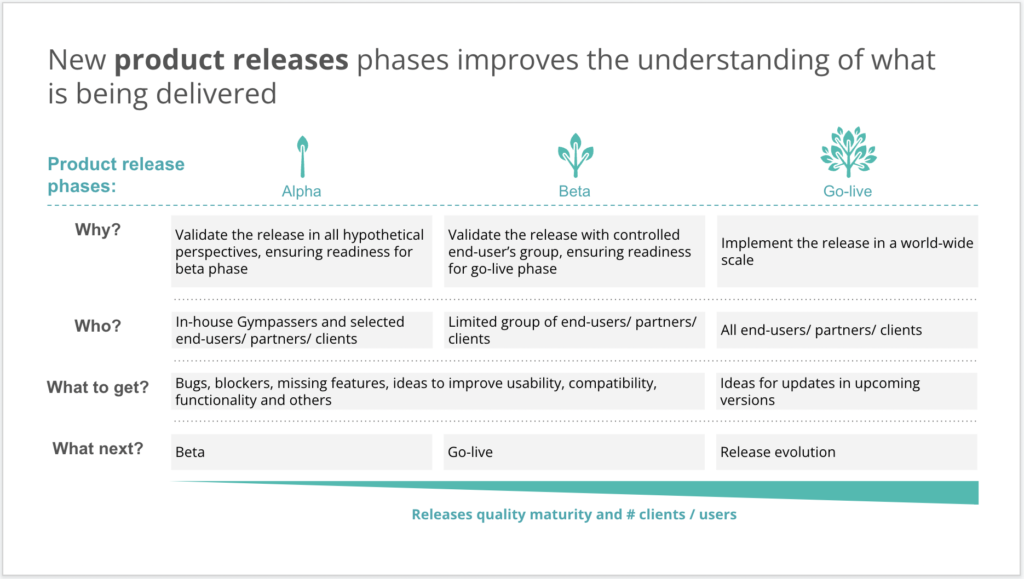New product: in-company training
7 de November, 2022Feature Team vs Product Team
22 de November, 2022When I talk about the release early and often behavior of successful product companies during in-company trainings or in-company talks, some people mention that their business is too risky and they don’t have room for errors. For instance, a bank that works with customers’ money, or a hospital that takes care of its patients’ health. They say that error is not acceptable and, for this reason, they cannot launch incomplete products. They have to launch a complete product that has all the minimum required features. Some people even say
“It’s easy for a startup, with no customers, to launch the very minimum (and embarrassing) first version of its product and evolve from there. We are a big company, we have hundreds of thousands of customers, and we cannot afford to make mistakes.”
And they are right, making mistakes in front of thousands of customers is not wise behavior.
Hack: alpha, beta, and go-live terminology
For this reason, I decided to use a hack to foster a digital product culture behavior of releasing early and often. The hack is the use of the alpha, beta, and go-live terminology. I started using this terminology to explain in which stage a product or a feature is. In the alpha stage, the product may not work properly. If it’s in alpha, it should be offered only to customers who understand the issues of using a new product and can cope with these issues without a bigger burden. So this should be a handful of clients, no more than that. At the beta stage, major issues of the product are fixed, but the errors may still occur and the user experience can and will improve. In this phase, it is possible to offer the product or feature to tens of customers. Then, when all known errors are fixed, and the user experience is working properly, then its time to move the product into the go-live stage, where the product can be offered to all prospects and existing clients. This certainly helps sales and customer support teams understand the release cycle of new features and new products.
I use the above slide to present this terminology to the company. Feel free to use it in your company. This slide was created by my dear friend Luis Figueira.

Workshop to Create the Vision and Strategy of your Product
Without the clarity of your product vision and strategy, it is very difficult, if not impossible, to manage your product. How do you decide where to put your focus and energy? What to leave for later? How to show stakeholders what you intend to do with the product? How to have arguments to say no to requests for new features in your product?
That’s why I created the Workshop to Create Your Product’s Vision and Strategy. Spaces are very limited and it starts next Monday, so reserve yours now!
Digital product education, coaching and advisory
I’ve been helping companies bridge the gap between business and technology through education, coaching, and advisory services on digital product development and management. Check here how I can help you and your company.
Newsletter
I write regularly about product management, product development, digital product leadership, and digital transformation. You can receive a notification whenever I publish a new article, without depending on any social network algorithms to notify you! Just subscribe to my newsletter.
Digital Product Management Books
Do you work with digital products? Do you want to know more about how to manage a digital product to increase its chances of success, solve its user’s problems and achieve the company objectives? Check out my Digital Product Management bundle with my 3 books where I share what I learned during my 30+ years of experience in creating and managing digital products:
- Startup Guide: How startups and established companies can create profitable digital products
- Product Management: How to increase the chances of success of your digital product
- Leading Product Development: The art and science of managing product teams
You can also acquire the books individually, by clicking on their titles above.

